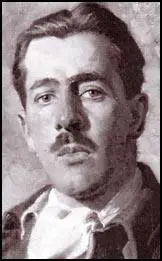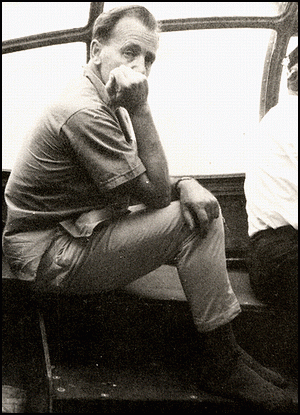Terry Spencer

Terrence Spencer was born in 1918. He took an engineering degree at Birmingham University but left on the outbreak of the Second World War. He joined the Royal Air Force and flew Supermarine Spitfire and Hawker Hurricane. He eventually became commander of his squadron.
One one occasion he parachuted out over the Baltic at 30ft above the water and once held the entry in the Guinness Book of Records for the lowest parachute jump on record. Later he was shot down and taken prisoner of war but managed to escape back to England. He was also awarded the Distinguished Flying Cross for his wartime achievements.
After the war he set up a successful aerial photography business and met and married a London stage and screen actress, Lesley Brook. The couple moved to South Africa where he became involved in diamond smuggling. This involved flying across the African borders with the diamonds hidden under the front seat of his single-engine plane.
In 1952 Spencer began working for Life Magazine. Over the next few years he covered stories all over the world. This including Kenya, the Congo, Vietnam, Algeria, the Middle East, Cuba and Indonesia. He also became involved in CIA covert activities such as Operation Tilt. In 1962 Eddie Bayo (Eduardo Perez) claimed that two officers in the Red Army based in Cuba wanted to defect to the United States. Bayo added that these men wanted to pass on details about atomic warheads and missiles that were still in Cuba despite the agreement that followed the Cuban Missile Crisis.
Bayo's story was eventually taken up by several members of the anti-Castro community including Nathaniel Weyl, William Pawley, Gerry P. Hemming, John Martino, Felipe Vidal Santiago and Frank Sturgis. Pawley became convinced that it was vitally important to help get these Soviet officers out of Cuba.
On 8th June, 1963, a small group, including William Pawley, Eddie Bayo, Rip Robertson, Virgilio Gonzalez, Eugenio Martinez, John Martino. Richard Billings, a journalist working for Life Magazine, boarded a CIA flying boat. Spencer also went on the mission as the photographer. After landing off Baracoa, Bayo and his men got into a 22-foot craft and headed for the Cuban shore. The plan was to pick them up with the Soviet officers two days later. However, Bayo and his men were never seen again. It was rumoured that he had been captured and executed. However, his death was never reported in the Cuban press.

Spencer returned to England to cover the Beatles and the 60s cults and fashions, and when the magazine folded in 1972 he freelanced for The New York Times and other US publications. He then began to work for a new American magazine, People, which gave him the opportunity of covering numerous UK pop groups, writers, and stage and screen celebrities. He also sold his work through Camera Press in London.
Spencer is the author of two books, It Was Thirty Years Ago Today (1995) and Living Dangerously (2002). He once told a journalist: "After surviving the Second World War, I never worried about being killed in Vietnam or any other war. I have never been afraid of death but I was always terrified of being hurt or wounded and carried a hypodermic syringe of morphine in my camera bag at all times. I've never even had a scratch in all the wars I covered. The only time I was ever hurt was when I was attacked by Paul McCartney after I discovered his hideaway in Scotland."

